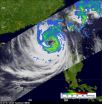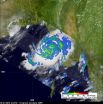(Press-News.org) HOUSTON, Oct. 22, 2010 – Researchers can spend entire careers producing outstanding work but still not see their efforts featured in the pages of Science, one of the world's most prestigious scientific journals. That won't be the case, though, for two junior faculty members in engineering at the University of Houston (UH).
Jacinta Conrad and Jeff Rimer, both assistant professors in Cullen College of Engineering's department of chemical and biomolecular engineering, had papers featured in consecutive issues of Science this month.
"Jacinta and Jeff are both extremely promising young researchers," said Ramanan Krishnamoorti, chair of chemical and biomolecular engineering at the Cullen College. "I expect that this is the first of many successes they will encounter in their independent careers. They are both excellent additions to this university."
Conrad's paper, which she co-lead authored with UCLA graduate student Maxsim Gibiansky, appeared in the journal's Oct. 8 issue. Conrad started this work during postdoctoral research at the University of Illinois at Urbana-Champaign. The article revealed a newly discovered method that bacteria use to move. Using hairlike appendages known as pili, some bacteria are able to pull themselves upright and "walk" across a surface. This research has ramifications in any number of fields, from food production to military transport.
Conrad's research team conducted its work by translating microscopy movies of bacteria into searchable databases of bacterial behavior. The ability to walk, she said, allows these bacteria to explore their environment by efficiently covering large areas before forming biofilms – colony of bacteria living on a surface and protected by a matrix of long molecules. Biofilms are problematic in a number of different industries and applications. In food production plants, for example, they are a prime cause of food contamination. Biofilms also increase the drag on oceangoing vessels that the U.S. military counteracts with often-toxic compounds. In hospitals, they are implicated in up to 80 percent of all non-specific infections.
This research provides insight into how biofilms form and offers a possible method of combating them. The chemistry of a surface, for instance, could be changed to reduce the ability of pili to stick to it, or the surface could be made rougher or smoother in a way that hinders bacteria movement and biofilm formation. Conrad said this work shows that how individual bacteria move on a surface impacts the structure of the biofilm they form. So, designing surfaces that change how bacteria are able to move might be a very directed and rational way of preventing biofilm formation.
Rimer's article was published in the Oct. 15 issue of Science and was featured on the magazine's cover. He conducted this work as a postdoctoral researcher in the lab of Michael Ward at New York University's Molecular Design Institute.
This research explores two possible drug targets for combating a rare type of kidney stone. While roughly 10 percent of the country suffers from calcium-based stones, some 20,000 people in the United States have stones caused by a genetic disorder causing a buildup of the amino acid L-cystine. These kidney stones form more frequently than calcium-based stones and are far more debilitating, with most patients requiring regular dialysis and unable to work. The common prescriptions for L-cystine stones include restriction of dietary sodium and protein intake, high fluid intake and medications that react with L-cystine to form more soluble molecules yet have troubling and sometimes serious side effects.
In the article, Rimer and his colleagues outline the effectiveness of two molecules, known as "tailored growth inhibitors," in preventing the growth of L-cystine-based crystals. Rimer's research showed the inhibitors resulted in a 1000-fold decrease in crystal volume. What happens in the presence of these inhibitors, Rimer said, is that the preferred direction of crystal growth is hindered, causing a shift in size and shape from large platelets to much smaller needles. Not only do smaller crystals form, but they also appear less likely to aggregate into stones.
While these results are based on laboratory testing and not human or animal models, they have clear implications for those suffering from L-cystine-based kidney stones. With smaller crystals and the likelihood of less crystal aggregation, fewer stones should form. Instead, L-cystine will primarily remain dissolved in urine and eventually expelled. The next steps of this research will be carried on at the NYU School of Medicine.
According to Joseph W. Tedesco, Elizabeth Rockwell Chair and Dean of the Cullen College, it is no coincidence that the same department has two young faculty members featured in such a prestigious journal.
"The Cullen College is in the process of increasing our faculty count by 30 percent," Tedesco said. "Drs. Conrad and Rimer both came to the college as part of this drive. Their efforts, along with the efforts of all our faculty members, will allow us to grow our research expenditures and help the University of Houston earn designation as a tier-one research university."
INFORMATION:
For Conrad's paper, visit http://www.sciencemag.org/cgi/content/short/330/6001/197. For Rimer's paper visit, http://www.sciencemag.org/cgi/content/short/330/6002/337.
Editor's note: Toby Weber, writer/editor for the Cullen College's office of communication, contributed to the writing of this news release. High-resolution photos of the professors are available to media by contacting Lisa Merkl.
About the University of Houston
The University of Houston is a comprehensive national research institution serving the globally competitive Houston and Gulf Coast Region by providing world-class faculty, experiential learning and strategic industry partnerships. UH serves more than 38,500 students in the nation's fourth-largest city, located in the most ethnically and culturally diverse region of the country.
About the Cullen College of Engineering
For more than 69 years, the UH Cullen College of Engineering has played a vitally important role in educating engineers in Texas. Its nationally-competitive programs are taught by innovative faculty, eleven of whom are members of the National Academy of Engineering. The college offers degree programs in biomedical, chemical, civil, computer, electrical, environmental, industrial, mechanical and petroleum engineering with specialty programs in materials, aerospace and computer and systems engineering.
For more information about UH, visit the university's Newsroom at http://www.uh.edu/news-events/.
To receive UH science news via e-mail, visit http://www.uh.edu/news-events/mailing-lists/sciencelistserv/index.php.
For additional news alerts about UH, follow us on Facebook at http://www.facebook.com/UHNewsEvents and Twitter at http://twitter.com/UH_News.
UH engineering professors featured in consecutive issues of Science
'Walking' bacteria, kidney stones addressed in junior faculty members' health-related work
2010-10-23
ELSE PRESS RELEASES FROM THIS DATE:
From obscurity to prime time: Viral political videos can spring from non-political sites
2010-10-23
What's the mechanism that makes a political video go viral? What causes a video clip to spread from a few people to millions, sometimes in a matter of hours? Is it a top-down process led by elite gatekeepers or bottoms up, driven by people at the grass roots? And how do blogs affect the life cycle of a viral video?
Common wisdom might suggest that a posse of political blogs triggers virality, but research from the University of Washington indicates it often springs from just two elite blogs followed by top general interest outlets that aren't considered political.
A ...
Falling in love 'more scientific than you think,' according to Syracuse University professor
2010-10-23
A new meta-analysis study, "The Neuroimaging of Love," conducted by Syracuse University Professor Stephanie Ortigue, reveals that falling in love can elicit not only the same euphoric feeling as using cocaine, but also affects intellectual areas of the brain. Researchers also found falling in love only takes about a fifth of a second.
Ortigue is an assistant professor of psychology and an adjunct assistant professor of neurology, both in The College of Arts and Sciences at Syracuse University.
Results from Ortigue's team revealed when a person falls in love, 12 areas ...
NASA satellites see Typhoon Megi poised for southeastern China landfall
2010-10-23
Typhoon Megi has run into winds that are weakening the storm, but it is forecast to make landfall in southeastern China late at night (EDT) on Oct. 22 (11 a.m. local time Hong Kong, Oct. 23) as a Category One Typhoon. NASA satellites have been monitoring the storm's rainfall, changing cloud cover, and changing eye as it weakens.
The Tropical Rainfall Measuring Mission (TRMM) satellite traveled directly above Megi on October 21 at 1401 UTC (10:01 a.m. EDT) when wind speeds were estimated to be about 100 knots (~115 mph). Megi caused at least 27 deaths in the Philippines ...
Category 4 Cyclone Giri hits Burma, NASA satellite sees heavy rainfall
2010-10-23
Tropical Storm 04B grew quickly into powerful Cyclone Giri and was making landfall in Burma today as a powerful Category Four Cyclone on the Saffir-Simpson scale. NASA's TRMM satellite noticed that the storm contained some heavy rainfall in addition to the powerful winds.
Giri is the second tropical cyclone of 2010 to form in the Bay of Bengal and was seen by the Tropical Rainfall Measuring Mission (TRMM) satellite. Cyclone Giri was seen clearly by the TRMM satellite twice on Oct. 21. The first good view was at 1534 UTC (11:34 a.m. EDT) when TRMM data showed a very well ...
Tropical Storm Richard born in the Caribbean, GOES-13, TRMM watching
2010-10-23
The GOES-13 satellite is watching Tropical Storm Richard work its way through the western Caribbean, and residents of eastern Honduras, Guatemala, Belize and Mexico's Yucatan Peninsula are bracing for its impacts as it is forecast to strengthen to hurricane status this weekend. Richard is going to be a big rainmaker for those countries.
The Geostationary Operational Environmental Satellite called GOES-13 captured a visible image of Tropical Storm Richard at 1732 UTC (1:32 p.m. EDT) on Oct. 22. GOES satellites are managed by NOAA. NASA's GOES Project at NASA's Goddard ...
GIA's Emerging Markets Monitoring Service to Help Companies Succeed in Growth Markets
2010-10-23
2010-10-22 -- Global Intelligence Alliance (GIA), a global strategic market intelligence and advisory group, has announced an Emerging Markets Monitoring Service bundle that specializes in providing local intelligence on Brazil, Russia, India and China, as well as other international growth markets such as Chile, Mexico, The United Arab Emirates, Vietnam and more.
Through its 13 local offices and native-speaking consultants in 100 markets, GIA's Emerging Markets Monitoring Service will assist clients with:
• Market entry intelligence; supporting planning to set ...
Hotelwithheart.com Donates to World Wide Fund for Nature (WWF-Philippines)
2010-10-23
Recognizing the myriad environmental problems facing humanity today, Hotelwithheart.com sealed a partnership with WWF-Philippines last January. The Spero-owned hotel booking site hopes to improve lives by helping WWF instruct communities to adapt to climate change, secure food and water sources, conserve local ecosystems, reduce the ecological impacts of new communities and corporations and promote renewable sources of clean energy.
The donation came from Hotelwithheart.com's commission from hotels, at no extra cost to guests. It was made possible by travellers who booked ...
Colasoft Upgrades Capsa Network Analyzer
2010-10-23
October 20, 2010 - Colasoft, an innovative provider of all-in-one network analyzer software, today announces the release of Capsa Network Analyzer 7.3.1. A brand-new analysis profile-Security Analysis Profile is added as well as more powerful Reporting Capabilities to enhance user experience.
The newly-designed Security Analysis Profile makes it more convenient and easier for users to find out potential security events with six new customer-requested Views. With Capsa 7.3.1, users can not only choose to open and close specific View, but also set up the sequences of ...
DJ Mixer Professional for Mac 2.0.3 is released, support Karaoke CDG files and support Vestax VCI-100
2010-10-23
DJ Mixer Professional is a powerful Virtual DJ software for Mac and Windows which integrates seamlessly with the iTunes library on a Mac or PC and makes it easy to mix your favorite music and video. Perform live, create and record mixes at home, or let DJ Mixer Professional mix any playlist automatically with seamless, professional transitions. It providing everything you need to create live mixes.
New version 2.0.3 support for Karaoke CDG files (mp3 + cdg files), support FLAC (lossless audio format), support Vestax VCI-100 and additional previewing/monitoring audio ...
Pardee Homes' Rachel Collins Recognized by BIA with Prestigious Icon Award
2010-10-23
The best of the best in San Diego's building industry were showcased and awarded for outstanding achievements, along with awards for local projects, interior design and architecture at the Building Industry Association (BIA) 2010 Icon Awards. Among those honored was Rachel Collins, director of sales for Pardee Homes. Collins was named Sales and Marketing Professional of the Year at the first-ever Icon Awards.
"The Icon Award is a well-deserved honor for Rachel, who has led our San Diego sales department for more than 17 years and oversees a team of 11 sales representatives ...
LAST 30 PRESS RELEASES:
Young adults commonly mix cannabis with nicotine and tobacco
Comprehensive review illuminates tau protein's dual nature in brain health, disease, and emerging psychiatric connections
Book prepares K-12 leaders for the next public health crisis
Storms in the Southern Ocean mitigates global warming
Seals on the move: Research reveals key data for offshore development and international ecology
Sports injuries sustained during your period might be more severe
World's first successful 2 Tbit/s free-space optical communication using small optical terminals mountable on satellites and HAPS
Can intimate relationships affect your heart? New study says ‘yes’
Scalable and healable gradient textiles for multi‑scenario radiative cooling via bicomponent blow spinning
Research shows informed traders never let a good climate crisis go to waste
Intelligent XGBoost framework enhances asphalt pavement skid resistance assessment
Dual-function biomaterials for postoperative osteosarcoma: Tumor suppression and bone regeneration
New framework reveals where transport emissions concentrate in Singapore
NTP-enhanced lattice oxygen activation in Ce-Co catalysts for low-temperature soot combustion
Synergistic interface engineering in Cu-Zn-Ce catalysts for efficient CO2 hydrogenation to methanol
COVID-19 leaves a lasting mark on the human brain
Scientists use ultrasound to soften and treat cancer tumors without damaging healthy tissue
Community swimming program for Black youth boosts skills, sense of belonging, study finds
Specific depressive symptoms in midlife linked to increased dementia risk
An ‘illuminating’ design sheds light on cholesterol
Who is more likely to get long COVID?
Study showcases resilience and rapid growth of “living rocks”
Naval Research Lab diver earns Office of Naval Research 2025 Sailor of the Year
New Mayo-led study establishes practical definition for rapidly progressive dementia
Fossil fuel industry’s “climate false solutions” reinforce its power and aggravate environmental injustice
Researchers reveal bias in a widely used measure of algorithm performance
Alcohol causes cancer. A study from IOCB Prague confirms damage to DNA and shows how cells defend against it
Hidden viruses in wastewater treatment may shape public health risks, study finds
Unlock the power of nature: how biomass can transform climate mitigation
Biochar reshapes hidden soil microbes that capture carbon dioxide in farmland
[Press-News.org] UH engineering professors featured in consecutive issues of Science'Walking' bacteria, kidney stones addressed in junior faculty members' health-related work



